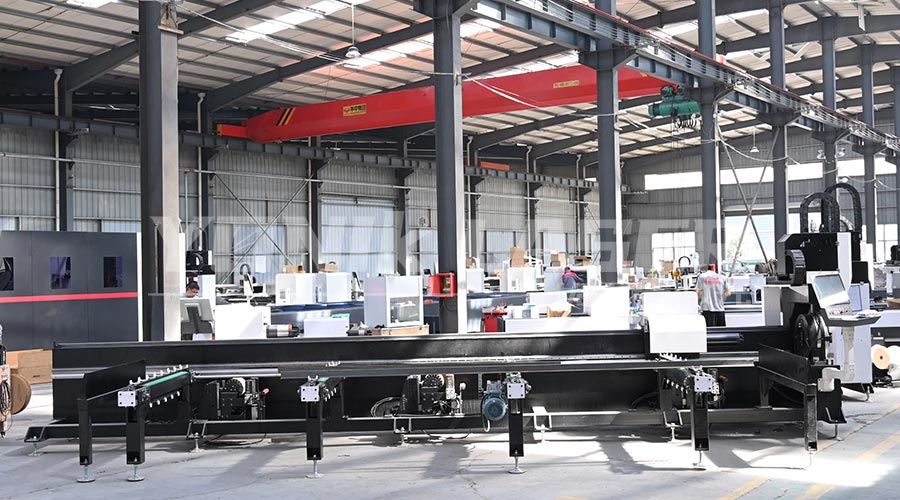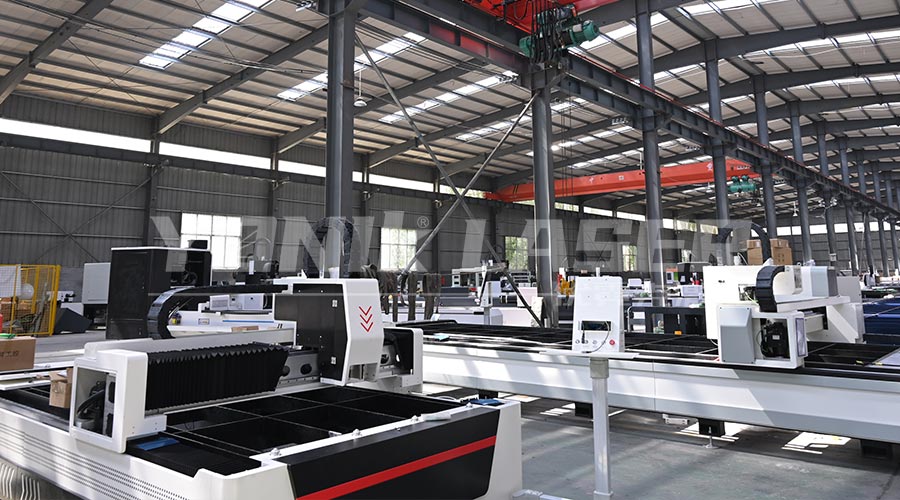As manufacturing industries demand increasingly precise processing capabilities, the laser machine to cut metal has emerged as a pivotal tool in tube processing. Its efficiency, precision, and adaptability have made it indispensable across sectors such as automotive manufacturing, construction, and aerospace. This article explores the technical advantages of laser machines to cut metal in tube processing and analyzes real-world applications through case studies.

I. Core Advantages of Laser Machines to Cut Metal
1. High Precision and Complex Shape Processing
Laser machines to cut metal achieve micron-level cutting accuracy by focusing high-energy laser beams. This is particularly critical in tube processing. For example, when cutting metal tubes with diameters as small as 10mm, traditional mechanical cutting often causes edge burrs or dimensional deviations due to tool wear. In contrast, laser cutting ensures precise control over slit width and flat tube ends. Additionally, laser technology excels at processing complex shapes like bevels, holes, and patterns, meeting customized demands.
2. Material Versatility and Processing Efficiency
Laser machines to cut metal support various materials, including stainless steel, carbon steel, and aluminum alloys, without requiring tool changes. For carbon steel tubes, laser cutting speeds can reach several meters per minute, far surpassing traditional plasma or flame cutting. The non-contact processing mode also eliminates mechanical stress-induced deformation, making it ideal for thin-walled tubes (thickness <2mm).
3. Automation and Intelligent Integration
Modern laser machines to cut metal integrate intelligent control systems that seamlessly connect with CAD/CAM software. Operators can simply import design drawings, and the equipment automates path planning, parameter adjustment, and cutting execution. For instance, an automotive parts manufacturer reduced programming time by 70% and achieved 24/7 production after adopting a laser cutting system.
4. Cost Optimization and Environmental Friendliness
While initial investment in laser machines to cut metal is high, long-term cost benefits are significant. Laser cutting eliminates consumables like saw blades or drill bits, and material utilization improves by 15–20% due to high precision. Furthermore, the process generates minimal chemical waste and dust, aligning with green manufacturing standards.
II. Case Studies of Laser Machines to Cut Metal in Tube Processing
Case 1: Precision Manufacturing of Automotive Exhaust Pipes
A leading automaker replaced traditional stamping with a fiber laser machine to cut metal for exhaust pipe production. The new system completed bending-section cutting and welding groove processing in one step, reducing per-piece processing time from 45 seconds to 12 seconds and raising product qualification rates from 85% to 99%. Laser precision also resolved sealing issues caused by thermal deformation in traditional methods, extending exhaust pipe lifespans.
Case 2: Batch Processing of Architectural Steel Tubes
A large steel structure company adopted a laser machine to cut metal to address complex node tube processing. For a landmark project requiring cutting of irregular steel tubes (diameter 200mm, wall thickness 8mm), traditional flame cutting caused deformation due to large heat-affected zones. Laser cutting, using dynamic focusing technology, maintained cut quality while tripling processing efficiency, enabling project completion two months ahead of schedule.
Case 3: Micro-Processing Breakthrough for Medical Device Tubes
A medical equipment company utilized an ultrafast laser machine to cut metal for micro-hole processing in 0.5mm stainless steel capillary tubes. Picosecond laser pulses minimized thermal damage, ensuring smooth inner walls. This technological leap allowed the company’s high-end catheters to enter European and North American markets.

III. Future Trends and Selection Guidelines
With advancements in fiber laser technology, the power range of laser machines to cut metal has expanded from kilowatt to multi-kilowatt levels, broadening applications for thick-walled tubes. When selecting equipment, consider:
Power Matching: Choose power based on material type and thickness to avoid overinvestment.
Automation Level: Prioritize systems with intelligent sensors and adaptive control.
After-Sales Support: Ensure suppliers provide timely technical maintenance.
Conclusion
Laser machines to cut metal are revolutionizing tube processing, driving industries toward efficiency and precision. From automotive to medical applications, their role continues to grow. For businesses, adopting laser cutting technology is not just a competitive edge but a necessity in the era of smart manufacturing.
2025-07-22
2025-07-21
2025-07-19